Discover Tara Park: A Travel Guide to Exploring West Serbia
Outside of Belgrade, west Serbia has some of the most popular attractions in the whole country – and for good reason. The region is known for its pristine nature, beautiful emerald mountains, and some local villages packed with history and charm.
Unlike the neighboring towns in east Serbia, most of those in the west are more developed. There are renowned villages like Drvengrad and growing cities like Zlatibor. Similarly, the hiking trails are better marked and it’s easier to explore on your own without a guide.
Tips for Planning a Trip to West Serbia

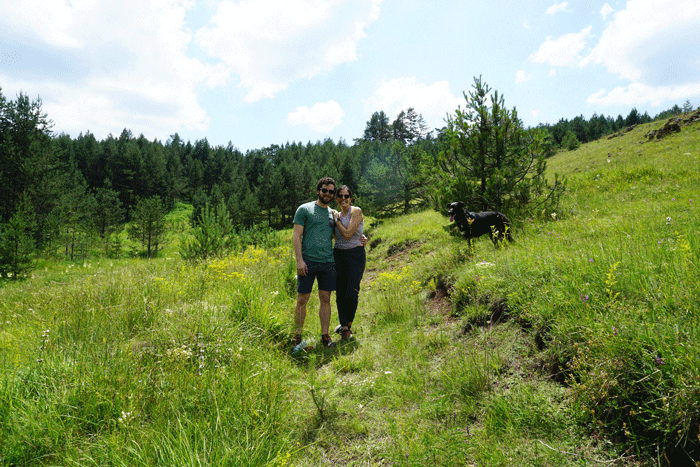
How Many Days to Spend?
You could easily spend a full week in west Serbia, but of course, it depends on how much of the region you want to explore. If you want to see the whole region, we would advise for at least 4 days. This will give you two days in the mountainous Mokra Gora area, one in Divčibare, and one in and around Valjevo. Since the driving times aren’t very long, four days will give you enough time to hike some of the more popular trails and explore the traditional cultural spots.
How to Get Around?
Though there are trains and buses available to Užice (one of the closest towns to Mokra Gora), we recommend renting a car, if possible. You can find and compare schedules and prices directly through Omio, but having a car will make it much easier to get around and have control over your own schedule. Just be careful throughout the mountains as the roads tend to be narrow and windy.
There are local rental options that we’ve used before, including Zim Car Rental Beograd. But pick-up options are only offered in Belgrade and they do run out of cars pretty quickly in peak season. For a larger option with more variety, we recommend using Discover Cars. The site is very user-friendly and aggregates all types of vehicles and prices to make sure you find the best deal.
When to Visit?
For us, the best time to visit west Serbia is between April-June and September-November. The trees and mountains are blooming and the weather is absolutely perfect. You’ll also notice people really come alive once Spring hits and temperatures become milder, and the Fall months push everyone to enjoy the last few months of sun and the turning leaves.
However, if you’re looking to do some skiing or enjoy the snow, of course, the best time to visit is in the winter. Just keep in mind that the winters in Serbia can be cold (impacted primarily by the cold air referred to as Košava) and the mountain roads can be particularly to maneuver after large snowstorms. Also, if you choose to come in the winter, we would recommend avoiding bigger cities and sticking to the mountains as the air can become very unpleasant when people start burning coal for heat.
Things to do in West Serbia


Around Mokra Gora
Mokra Gora is in southwestern Serbia, about 3 hours away from Belgrade. It literally means “Wet Mountain” in English and was recently ranked among the best tourist villages in the world by the World Tourism Organization.
The village stretches between the beautiful mountains of Zlatibor and Tara, and it’s truly one of the most untouched and pristine places in Serbia. There is incredible beauty surrounding the village, from lakes and national parks to antique trains and houses on the water. Below are our favorite things to do around Mokra Gora and click here to check out an incredible guided tour of the area.
Drvengrad
This is a tiny wooden village located on the Mećavnik hill within Mokra Gora. The whole village is made out of wood – even the lamp posts – and consists of the main street leading from the entrance gate on one end to a wooden Ordothox church on the other. You can walk around the village in just 15 minutes, but it is incredibly unique and unlike nothing we’ve ever seen before.
It was built by the famous director Emir Kusturica for the production of his movie “Life is a Miracle.” After the shoot, the village just stayed there and eventually became a tourist destination. Now, it hosts the “Kustendorf” film festival, where young filmmakers and students can meet famous actors and directors. Emir is known to visit the village quite often – we even spotted him during our stay.
There is a hotel inside the village called the Mecavnik Resort. This is where we stayed during our visit and we truly enjoyed it. Drvengrad is perched on a hill inside the Mokra Gora mountain range which lends itself to a peaceful atmosphere and amazing views from all angles. It was also a central location to explore the other spots nearby.
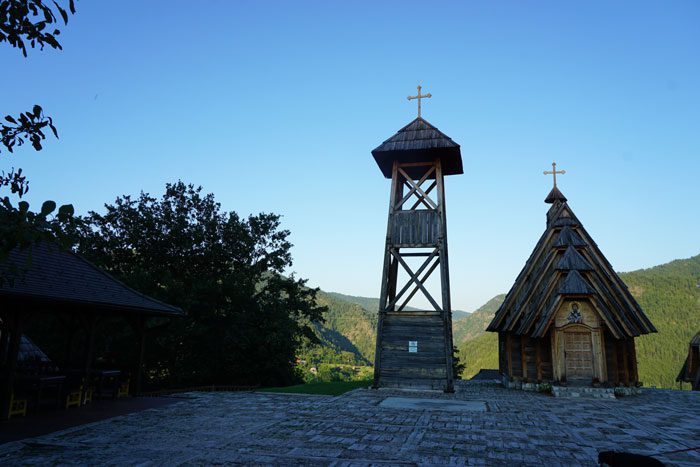

Sargan Eight Train
This is the route that originally connected Belgrade to Sarajevo during the former Yugoslavia. The train was shut down for decades, but a smaller part was reconstructed and today runs as “Nostalgia Express.”
This reconstruction in 2003 has since made the Mokra Gora town of fewer than 1,000 people increasingly more popular.
With a narrow-gauge train track, the route is supposed to be one of the most beautiful in Europe. It starts at the Mokra Gora station and takes a journey of about 2.5 hours. It was closed due to Covid-19 during our visit, but everyone highly recommends it.
There’s also a nice museum at the Mokra Gora stop, highlighting the history of the train, the importance of the route, and the meaning of its closure for the people and the towns.


Tara National Park
This is one of Serbia’s most popular national parks, with dense forests, deep cliffs, and gorges carved by the Drina River. In fact, it’s known as the lungs of Serbia and locals say the Tara mountain is the most beautiful in Serbia.
Banjska Stena is the most popular viewpoint in the park. It’s pretty easy to reach through google maps and takes only a 15-minute walk from the parking lot. It normally has a spectacular view of Lake Perućac, but of course, we went when visibility was close to zero. Search Banjska Stena on google and you’ll see why we will definitely be going back.
There are many other hikes to choose from around the park and we recommend using the Komoot app to find the best trails and plan your route.
The Zaovine Lake is also worth a stop. It’s an artificial lake but it has a rich royal blue color and is surrounded by pines and green lush. The water levels can vary depending on the amount of water used to generate electricity, so the lake can run low at times.

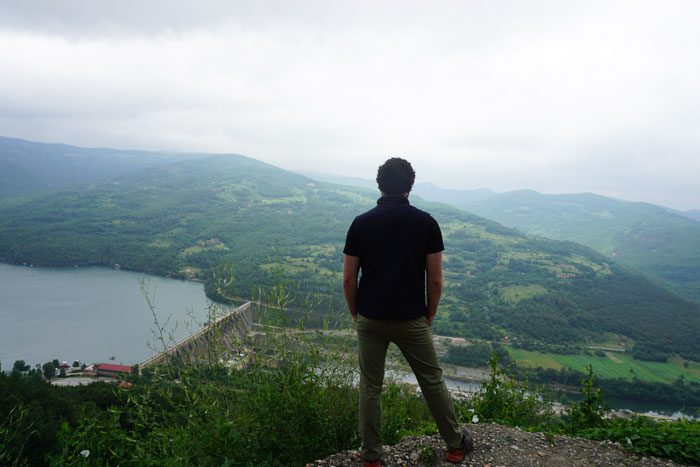
Lake Perućac
This is another artificial lake, which thanks to thousands of years of work by the Drina river, the lake sits in a gorge on the edge of the Tara mountain range.
What makes this lake so noteworthy is the houses floating in the water. There are not that many for rent and they fill up quickly, so make sure to book with plenty of time. The houses are not physically connected to the land so you will need to take a rowboat across. In our case, we had to take a makeshift water gondola from the land to the house. Most homes (including ours) offer rowboats and paddleboards in case you want to get out on the water.
Click here to read all about our experience living on the Serbian water.
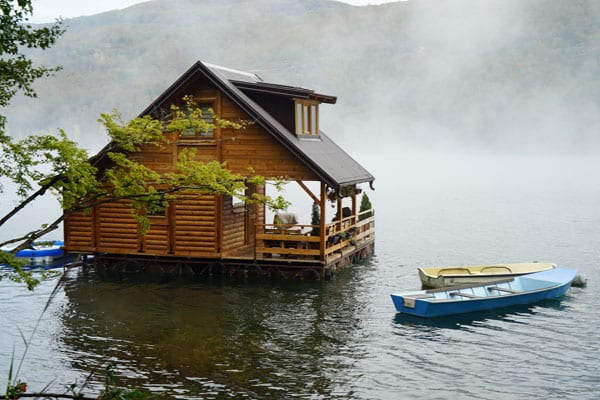
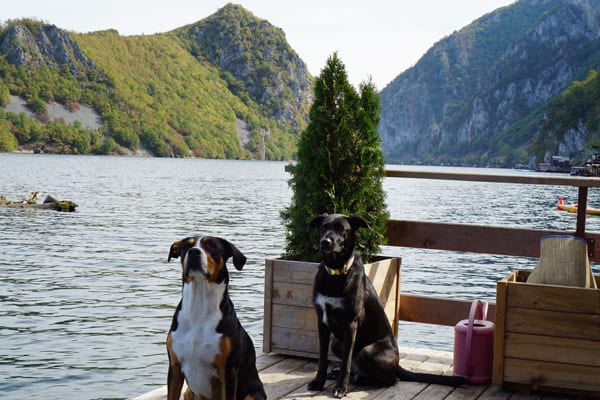
Drina River House
On your way out of Lake Perućac to Belgrade, there is the famous Drina River House. It’s a small wooden house sitting on a rock in the middle of the river, almost defying nature. Apparently, the river has already washed away six of these houses, but they keep building them as a symbol of perseverance. There are a couple of restaurants around the house, and we’d recommend checking out Studenac. It’s traditional Serbian food, with an authentic feel to it.


Zlatibor
Zlatibor is one of the most popular spots in Serbia. The city itself is a 35-minute drive from Mokra Gora and it’s much more developed than the smaller village. The city is good for families with lots of restaurants, places to stay, and even amusement parks. But, it’s grown so much in recent years that it can feel overcrowded, especially if you’re wanting to getaway.
The Zlatibor mountain is further south of the city and there are a couple of wonderful lakes throughout, including Zlatibor and Ribničko lakes.
They recently inaugurated the longest gondola in the world here at 9 km long. The gondola connects the center of Zlatibor with the ski center of Tornik (Zlatibor’s highest peak), through Lake Ribničko, and takes about 30 minutes to complete the ride.


Uvac Special Nature Reserve
The nature reserve is further south of the Zlatibor district and is one of the most incredible pieces of natural architecture. The river cut through the limestone rocks and formed a path that almost resembles a snake.
There are 12 arranged lookouts in the gorge, with the three most popular being Veliki Krš, Veliki Vrh, and Molitva (“Prayer”). We haven’t yet gotten a chance to visit, but the photos of the road, the hikes, and the view our outstanding.
Ovčar-Kablar Gorge
The gorge is a little over an hour east of Mokra Gora. The gorge is carved within the mountains of Ovčar in the south and Kablar in the north (thus gaining its name), and the river flows through it for about 15 kilometers.
You can hike up either mountain for stunning views of the gorge. In fact, there are 10 marked trails totaling more than 90 kilometers, with varying degrees of difficulty. You can also drive up to multiple observation decks, the best being “Kablar” on google maps. The drive alone through the mountains, greenish-blue river, and lush green fields is worth a pass.
The area is made even more magical by the large number of monasteries present. Today, there are only 10 active monasteries left, most from the Ottoman occupation. Legend says that spots around the gorge served as spiritual refuge and shelter during times of need.
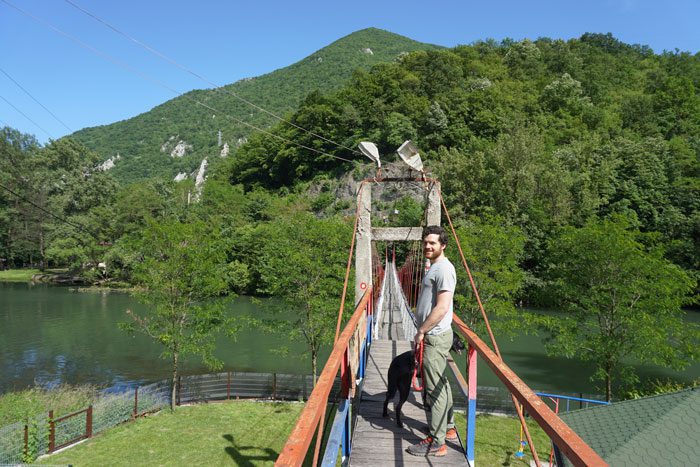
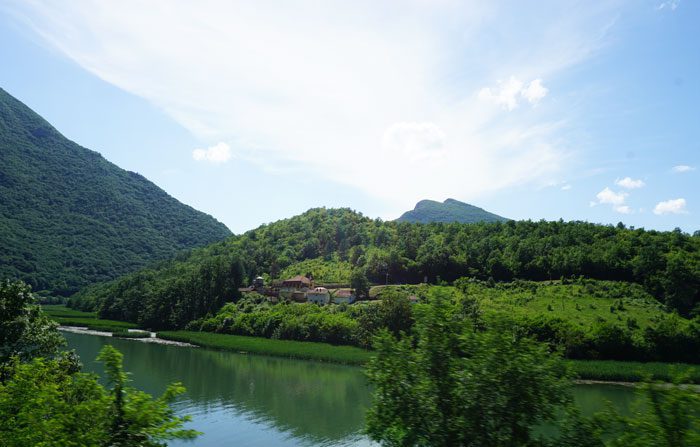
Divčibare
This place will always have a place in our hearts as it’s where we contracted Covid! Only kidding, but not really. It’s a hilly getaway only 1.5 to 2 hours from Belgrade, It’s worth the visit if you’re looking to spend some time outdoors.
Divčibare Ski Resort
Divcibare is known for its ski resort, which is about 800 meters long. They have the capacity to produce artificial snow and prices are very affordable since a ski pass for the day is less than $20.
There wasn’t any snow when we visited, so we didn’t ski, but we did get to hike up along the ski trails and had a great time with some spectacular views.
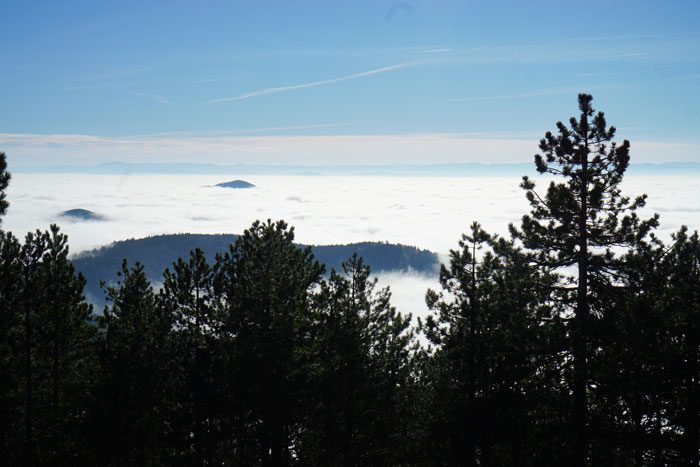
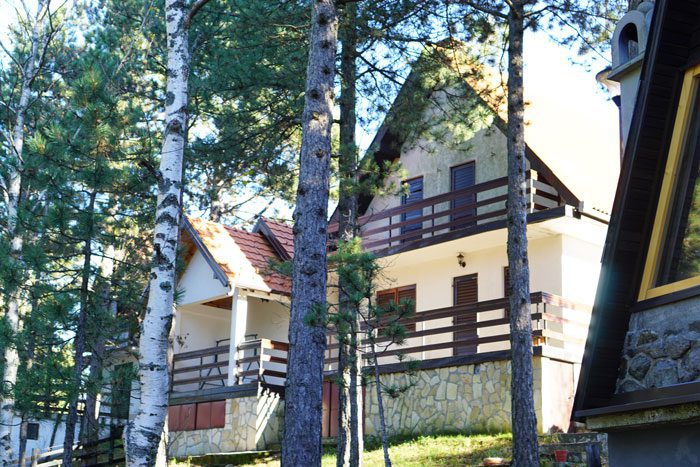
Divčibare Mountain
This city is all about the outdoors and the fresh air (a great alternative to Belgrade’s bad winter area) since you’re generally above the clouds. There are several marked trails, with varying degrees of difficulty and length.
The Drvo ljubavi trail, for instance, takes you through Vidikovac, Crni Vrh, and the ski resort, or as far as Velika Pleca if you wish to keep hiking. Most of the trails can be accessed directly from the center of the city, where you can also find additional tourist information.


Outdoor Market
There is a nice outdoor market in the center of the town, where you can buy local cheese, honey, and rakija. Many of the sellers do not speak English, so haggling will be tough, but prices are already incredibly cheap. We saw interesting ways of selling honey (to say the least) and had a lost in translation moment when trying to buy rakija, so you can be sure it will be a local experience!
Valjevo
The city of Valjevo is one of the largest cities in west Serbia and is only about 1.5 hours away from Belgrade. Like much of Serbia, the city has a somber past. The First Serbian Uprising began here and suffered rough repercussions from the Ottoman empire as a result.
It was also the center of the Serbian army headquarters during World War I, suffering substantial losses. But, the city has also produced some of the nation’s most notable individuals over the years, so expect to see lots of monuments.
Our good friend and tour guide Zeljko Petrović is from Valjevo and he’s the one who showed us around the city. While you certainly don’t need a guide to explore these spots, he knows this area quite well and is particularly passionate about this part of the country.
City Center
Valjevo is a truly beautiful city, with the Kolubara river flowing right through it. There are lots of little cafes throughout the city, but the prettiest street has to be Tešnjar street. The street used to be the center of the town during the Ottoman occupation, and today continues to preserve that Ottoman aesthetic. Though there are fewer establishments than before, there are still many restaurants and bars to try. And if you do end up in Valjevo, make sure to try Valjevsko – the traditional local beer.
The Cathedral of the Resurrection of the Lord is the largest church in the city and is worth checking out for its size and beauty.
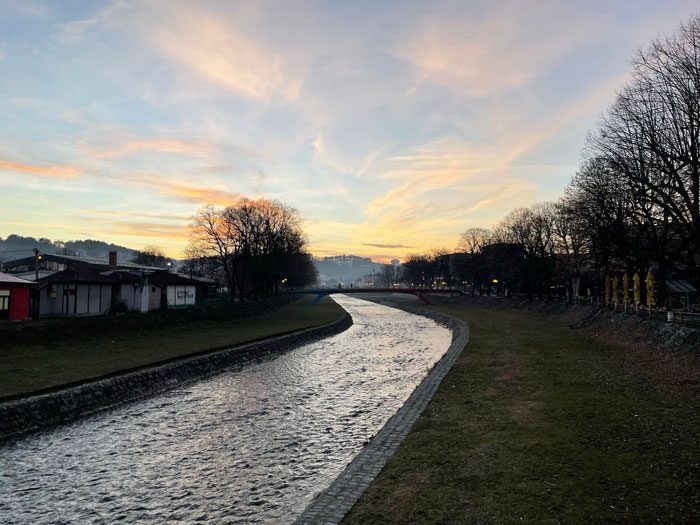

Monument of Stevan Filipović
This is an impressive monument sitting on the Vidrak hill near Valjevo and representing one of the greatest symbols of defiance. Stjepan Filipović was a Yugoslav communist who was sentenced to death by the Nazis in May 1942. As he stood on the gallows with the rope around his neck, he threw his fists in the air (like in the monument) and shouted “Death to fascism, freedom to the people!”
A 17-year-old girl happened to take a photo of the hanging. Though they were eventually confiscated, a local doctor trusted by the Nazis was allowed to see them and was able to hide the iconic image under a rug. Filipović is today considered a national hero and a showing of resistance.


Velika Stena
Translated as “the Big Rock”, Velika Stena is a beautiful viewpoint only 25 minutes away from Valjevo. The large rock looks out into the winding lake Rovni and the pristine nature around it.
Lake Rovni is an artificial lake that was created after a dam was built through the Jablanica river. Though the view is stunning and the water is now piped to different cities for purification, the creation of the dam flooded a locally beloved church.

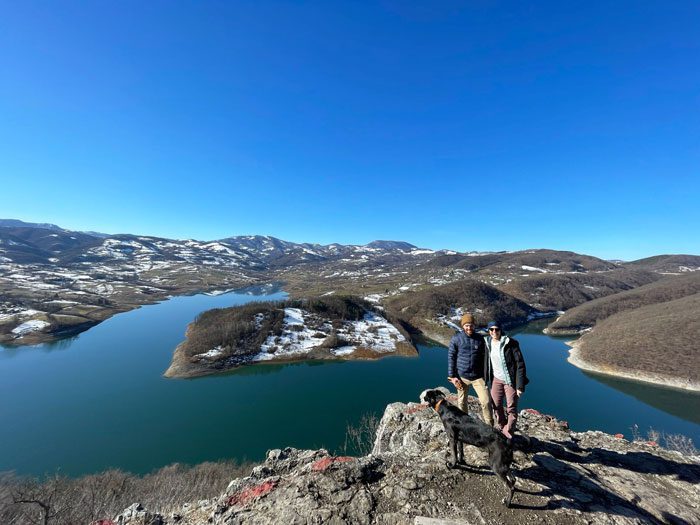
Taor Springs
The springs are about an hour drive away from Valjevo in the village of Taor. The area is known for its beautiful cascades and emerald green nature surrounding the 400-meter-long slope. In fact, you could see these springs in many tourist pamphlets during the former Yugoslavia.
The area is also well known for its bear garlic, used often to make medicine. We tried some rakija made out of it, and it was interesting, to say the least. It’s really only palatable mixed with some water or another liquid.
Because of man-made errors and disturbances, the springs can run completely dry during droughts, so best to visit in the winter or spring. Just be sure to bring boots or hiking shoes if you choose to visit in the winter, since there will likely be a lot of snow, making the hike more challenging.
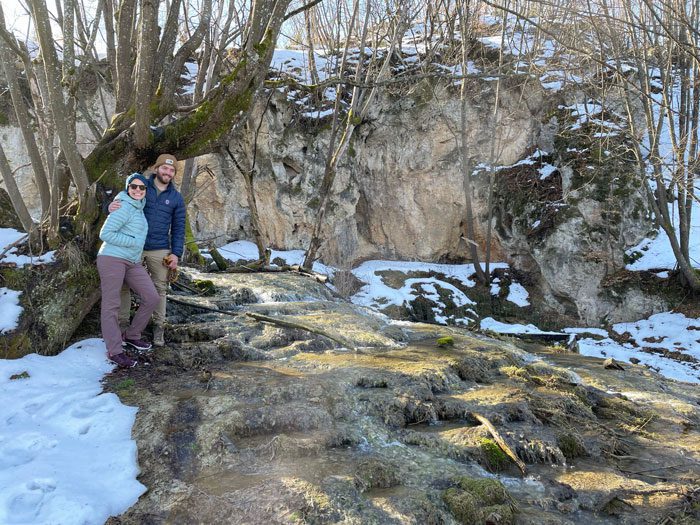

Predah Restaurant
This is a small restaurant on the side of the road and next to the Jablanica river, about 15 minutes away from Valjevo. Honestly, if it wasn’t for Zeljko, we probably wouldn’t have stopped. The place is known for its snails – so much that even French visitors have purchased them frozen to take home and cook later. It was our first time having them (so we don’t have much to compare), but they were delicious. Make sure to try their fresh juices and pies as well!
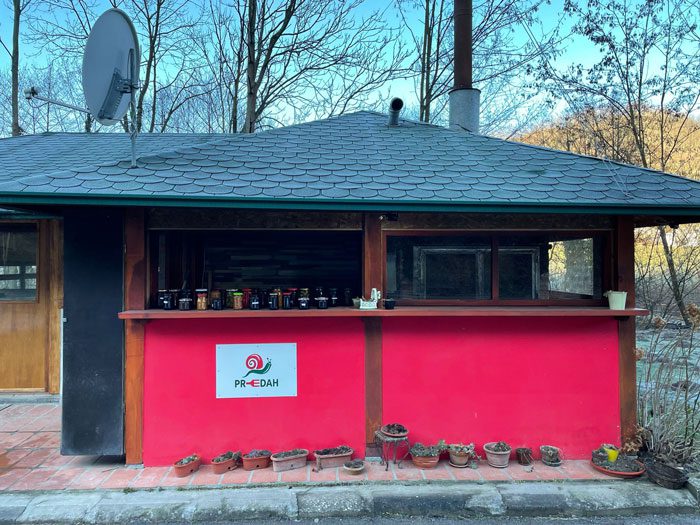
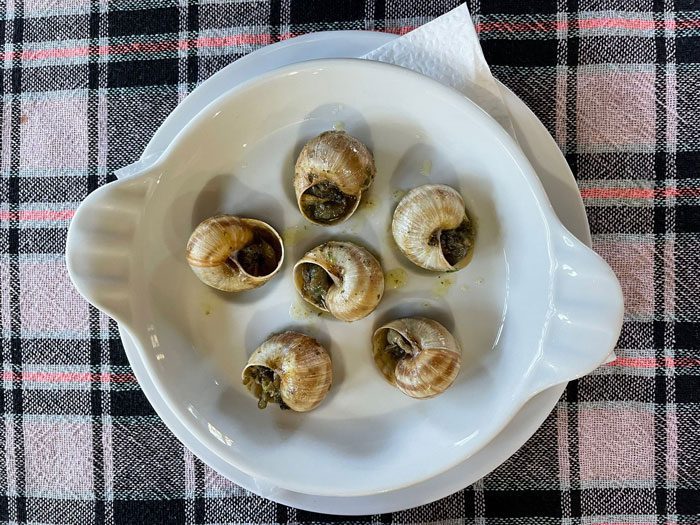
Where to Stay in West Serbia
Mecavnik Resort (Drvengrad)
The coolest part about the Mecavnik Resort is that it’s located right in Drvengrad. Like the rest of the village, the accommodations are made out of wood. The rooms are spacious and comfortable, and there is a bar and restaurant within the property. The views are absolutely stunning and they even offer a pool, spa, and tennis courts. The property does book up quickly, so make sure to book in advance.

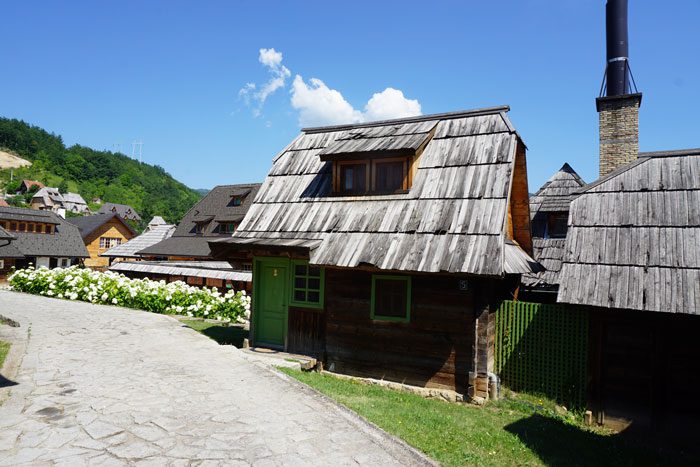
Smeštaj Iver (Mokra Gora)
The Smeštaj Iver hotel is also run by Emir Kusturica and has great reviews. Customers say the staff is excellent and very attentive, and that many of the rooms have a great terrace with views of the mountain. The hotel offers ski-to-door access and a spa, as well as open outdoor areas to enjoy the views. The rooms also look comfortable and fairly modern.
Kucica Na Vodi (LakePerućac)
This house is right on Lake Perućac – meaning it’s one of the floating homes on the lake. You will be provided a water gondola to go from land to the lake, so it can be slightly challenging, but well worth it. One important thing to note is that Kucica na Vodi consists of three separate and significantly different homes.
Two are more of a modern fully functioning home and a third is a cabin. We went in thinking we were getting a modern home and ended up getting something closer to a cabin. We aren’t against “roughing it” from time to time but the problem was we were completely unprepared, so make sure you’re aware of exactly where you will be staying. This is especially true if you’re planning on staying in the fall or spring months, as it can get especially chilly on the water.
These houses book up very fast, especially in the summer, so be sure to reserve way in advance of your trip.
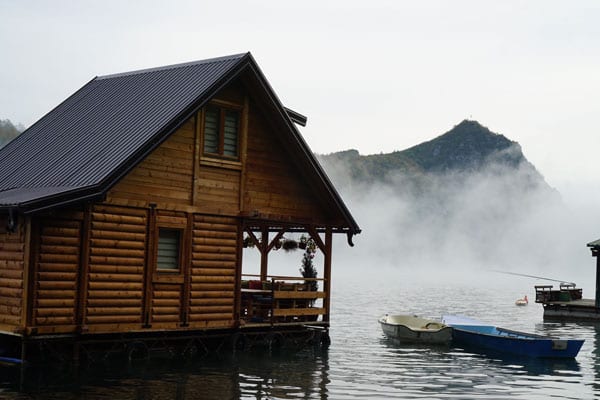
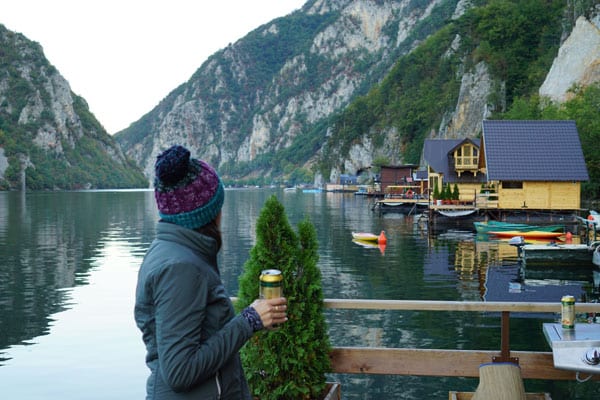
Vila Dora (Divčibare)
This is a beautiful house with 2 bedrooms and 1 bathroom – and it’s where we wish we would’ve stayed when we visited. Unlike many other traditional homes in Serbia, it has modern amenities and comfortable beds. The property is right in the mountains and has a wonderful balcony to enjoy the views.
Divcibarski Vajati (Divčibare)
We’re not too keen on staying in an apartment if we are going to go to the mountains, but apartments can be a much better option when the weekend homes start getting booked up. Vajati looks to have spacious rooms with modern decor. The facility itself has full spa treatments available, a sauna, and a jacuzzi. It also has a full kitchen and restaurants within walking distance.
More Serbia Travel Guides
Belgrade
North Serbia
East Serbia